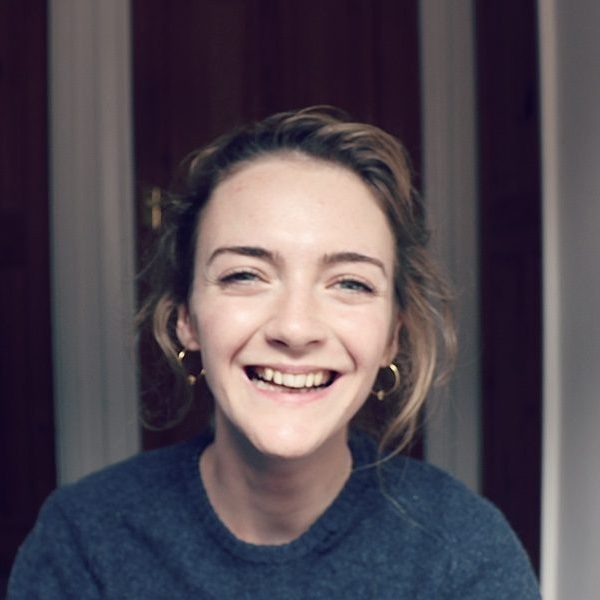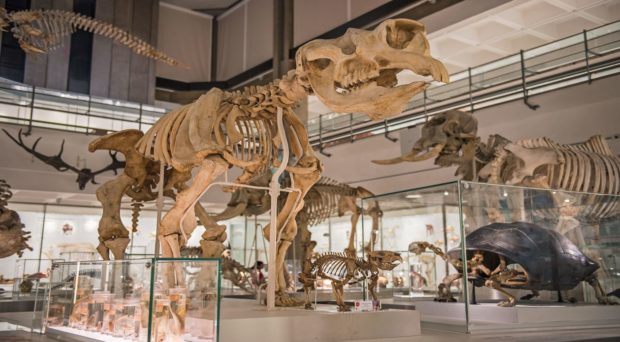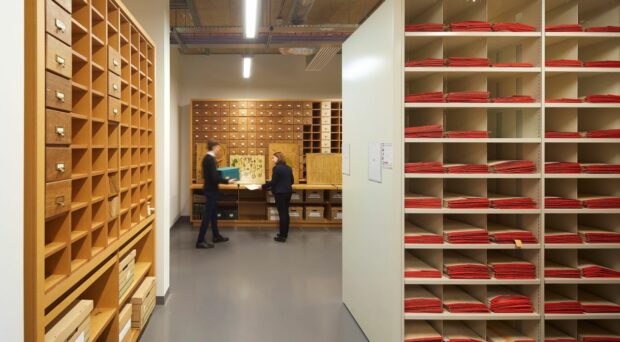Play and exploration are central to children’s learning. How can museum spaces facilitate this best? Here, we present three case studies we can all learn from.
Sara Steele and Kate Howlett, both based in the University of Cambridge Museum of Zoology, ventured up to Birmingham for a museum-based expedition and a Kids in Museums workshop. Here, they share what they learned about play, children’s autonomy and effective consultation with families.
Thinktank, Birmingham Science Museum – MiniBrum: next-level interactive
The Thinktank Science Museum is a tower of galleries exploring topics from space travel to medicine to natural science. The most impressive space by far, and I may be biased here, is their new MiniBrum gallery – a gallery curated to look like Birmingham in miniature, a child-sized city complete with canal and barge, racetrack, car garage, museum, animal burrow and more. Each element is next-level interactive. Naturally, the animal burrow sparked my interest the most, with peepholes overlooking small animal specimens.
It is easy for us as adults to forget that a vast amount of learning is done through exploration. Being aware of this, the team at Thinktank called on the expertise of local nursery school children when designing MiniBrum. By opening up the concept of discovery through play and letting the children lead the way in a den-making activity, the team discovered how our community can shape our identity from a young age, as well as how a space can best facilitate children to lead their own learning.
The inclusion of a ‘Gallery Rules’ panel encourages kind play, no food or drink, and exploration within a child’s capabilities.
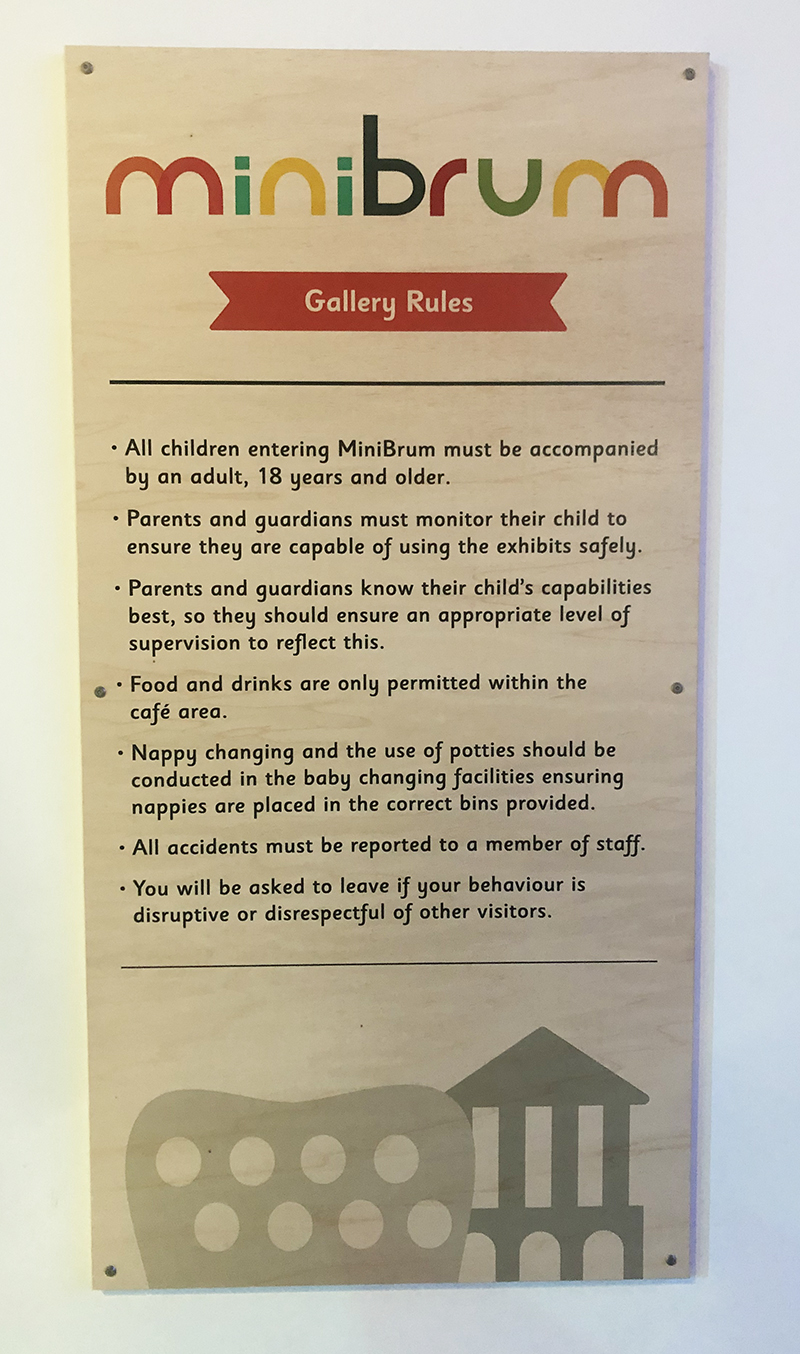
Now I can already hear my museum colleagues thinking, “Excellent, but why should this space exist in a museum?” I agree that it is important for us as museum professionals to remember where we can serve our community and where other providers are better placed. However, I fully believe that when it comes to identity, museums can be excellent nurturers of positivity and acceptance, inspiring conversations about cultures, discovery and the natural world. So, at MiniBrum, you could be talking to a fellow pre-schooler about an animal you know that lives in a burrow or about that time you fed the ducks at the canal, or telling your family how much you know about the seasons. All without the realisation that you are exploring, discovering and learning.
Westminster Abbey: a ‘no-pencils’ trail
As a listed building with thousands of visitors a year, Westminster Abbey’s learning team have some unusual restrictions to contend with, such as angular beams perfect as a child’s climbing frame, plenty of heavy stuff at head height and a ‘no pencils’ rule. How, then, do you go about creating a trail for families? The Abbey trialled a several approaches from a story-based trail to an observation-focused one, all whilst going through the cycle of creation, test, rework, test again. They even asked visitors to test-run the various trails for them – what a great idea! Visitors were given a special exemption from the ‘no pencils’ rule to scribble all over the trails with comments and suggestions, and they could chat in person with creators who were positioned in the space. This also gave creators the chance to observe how families and children moved around the space and engaged with the trail, maximising the chances that the final trail would deliver exactly what families needed from it.
The final result is something that incorporates observation, conversation and role-play: a cardboard crown decorated with things to discover while looking thoroughly royal throughout. I especially like the two-sided aspect of the crown, allowing for two trails of differing engagement levels, which can be chosen by the wearer.
Lapworth Museum of Geology: a space for children to call their own
Whilst the layout, labelling and contents of the Lapworth Museum were sufficient to catapult it to one of my favourites, what really stood out for me was just how children- and family-friendly the space was. This is so often advertised, but rarely have I seen it achieved as well as here. From the reception desk, you can pick up free, colourful trails tailored to different age groups, right down to toddlers, who have to search through the display cases for Tilly the Trilobite (an illustration so charming that I couldn’t resist purchasing it in magnet form).
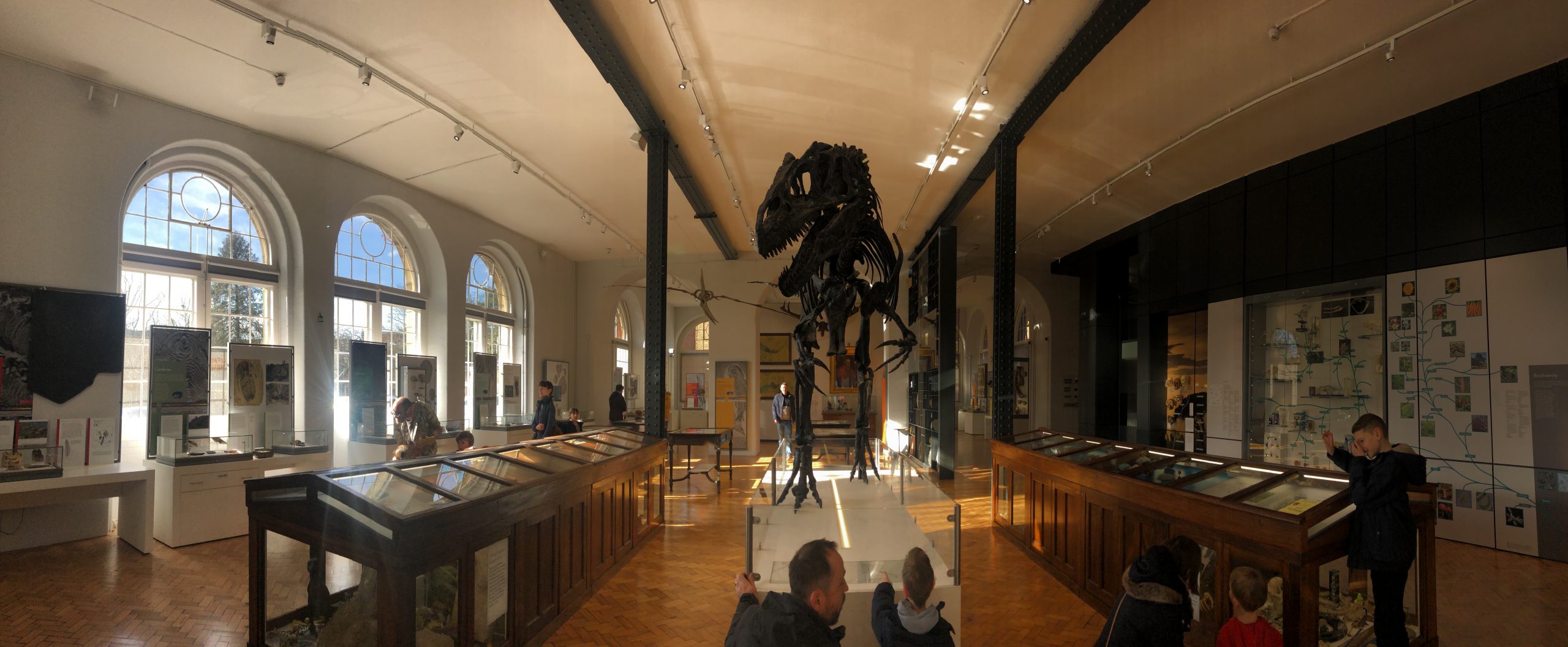
Typical displays of fossils are made accessible to slightly older children, with plenty of drawers to open in the Jurassic section, showing various bones from Jurassic sea monsters. I observed one child work their way methodically through these, opening each one in turn and peering dutifully into each.
Beneath the typical glass cases in the main hall are beautifully designed spaces at three-year-old height. These are filled with a mixture of real objects and artificial ones to create a fun, 3D environment for children to explore and peer into. One of these was an underwater scene with a clown fish, a suspended puffer fish and sea anemones. Another was a coral reef teeming with (inanimate) life, and another was a cabinet of curiosities, full of weird and wonderful objects showing what a geologist or naturalist might collect. So engaging were these that a very small person waddled up to us, clipboard in hand, to point out proudly the ‘Nemo’ hiding at the back; this was a child who had enjoyed their time in a museum space and would be wanting to come back – a success!
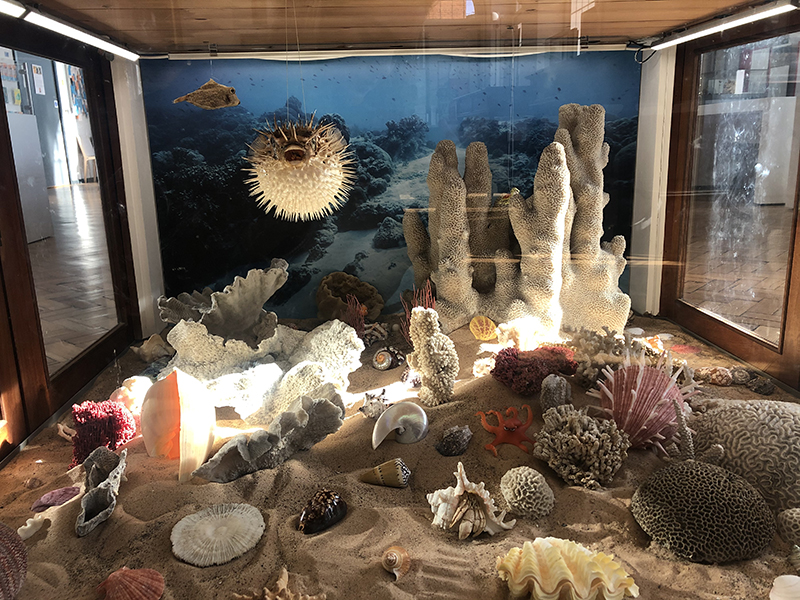
I was also impressed by a microscope (potentially the fault of the biologist in me) which was encased safely in a large glass box. You could rotate a disc which lay beneath it, holding ready-mounted specimens, enabling you to examine each in turn. User-friendly ‘zoom’ and ‘focus’ buttons to the right-hand side mean small hands can easily manipulate a high-tech microscope to examine real fossils, without endangering the kit or the specimens themselves.
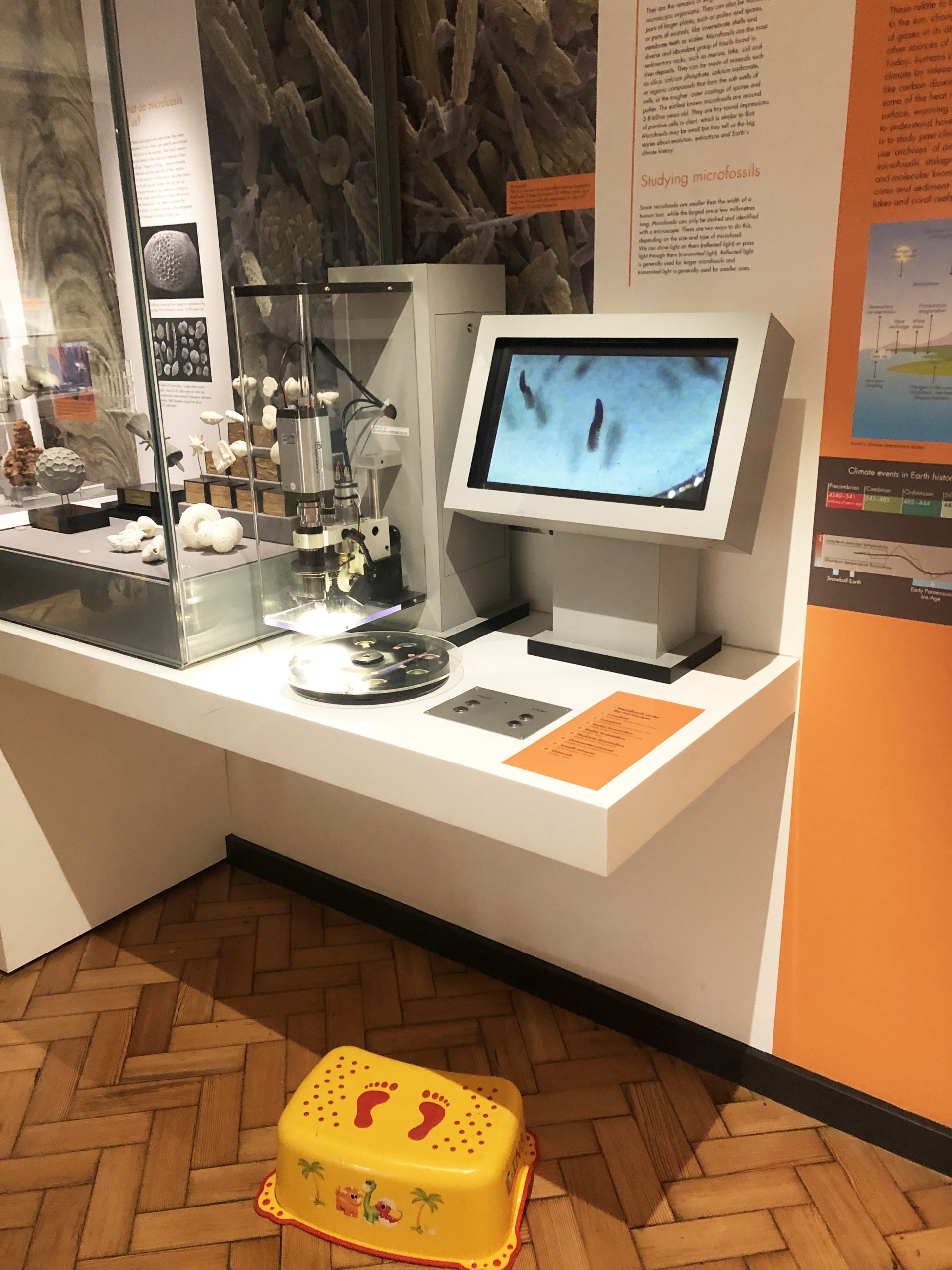
And if all that doesn’t suffice, there is also a creative room off to the left-hand side of the entrance with small tables and chairs, colouring pencils, plenty of books and a plethora of worksheets for children to explore and scrawl all over.
Going one step further, last year Lapworth installed an exhibition entitled ‘Creative Children Curating Collections’ in their temporary exhibition space. This was co-curated with groups of children from local nurseries who had never been to a museum before and was intended to look at the Museum’s collections through a child’s eyes. The children participated in group sessions in which they met Mary Anning (an enthusiastic and patient actor) and talked about why different objects might be in a museum. Objects were then displayed in the way in which children had engaged with them: a large white quartz crystal, to a three-year-old, was a hedgehog, so this is how it was displayed! These young children then brought their parents and grandparents along, proudly showing them their objects – an ingenious way to get young children from hard-to-reach communities through the door and hooked!
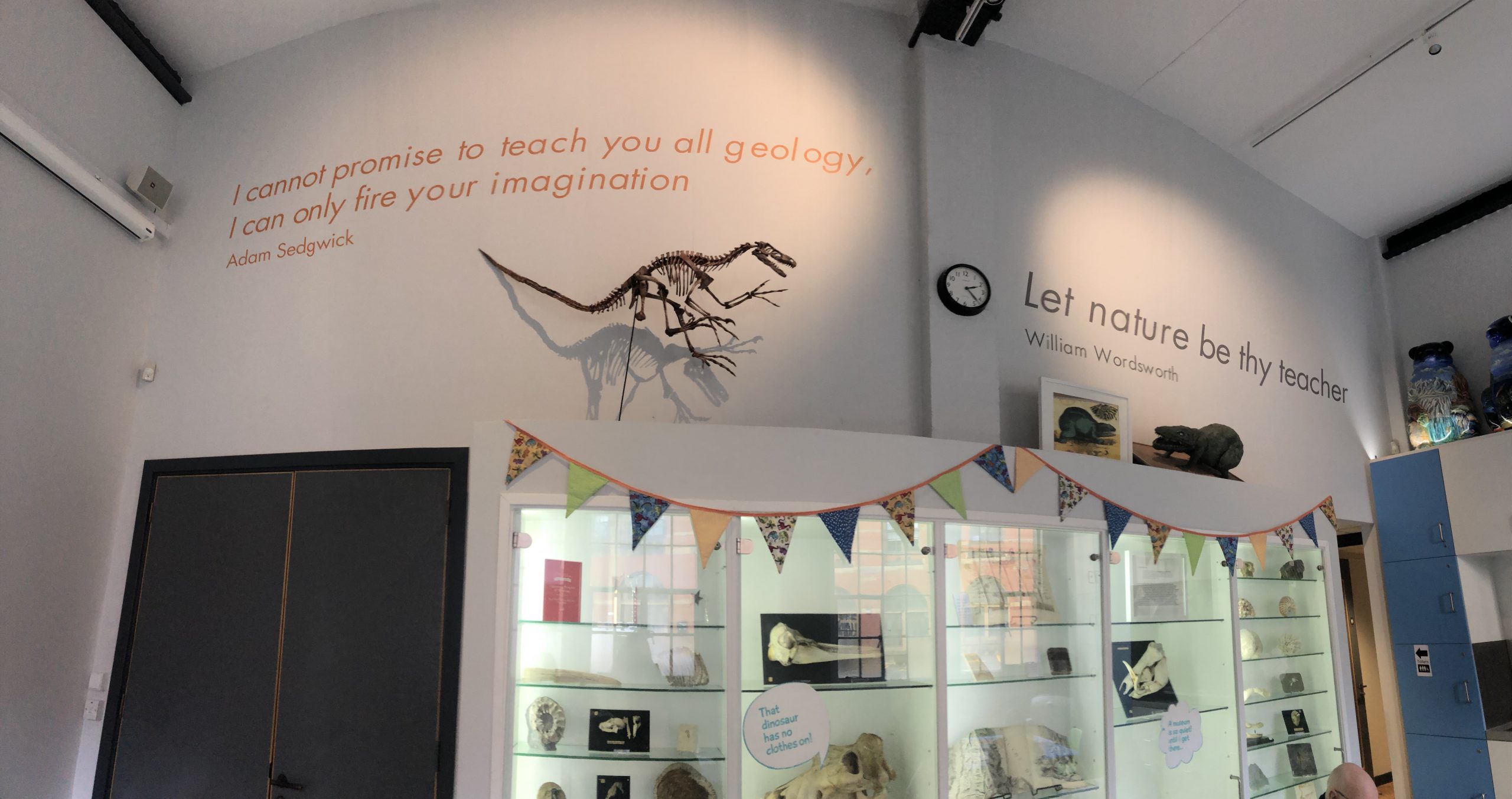
They are hoping to repeat their success this year through an exhibition co-curated with a group of older children, aged 11-12, entitled ‘Museums and Wellbeing’. Children will display their chosen objects along with their thoughts and feelings on them, expressed through emojis and poetry. This will run until the 7th August 2020.
Concluding thoughts
We learned a lot about how play and exploration can allow children to lead their own learning, and how spaces and trails that are created with this in mind can be truly refreshing and inspiring places. We certainly left with notebooks full of ideas and a determination to implement these and make a change!
Many thanks go to Francesca De Rosa and Sarah for showing us around MiniBrum, to Aaron Paterson from whom we learned about Westminster Abbey’s innovative consultation process, and to Aerona Moore who talked with such passion about her community work at the Lapworth.


